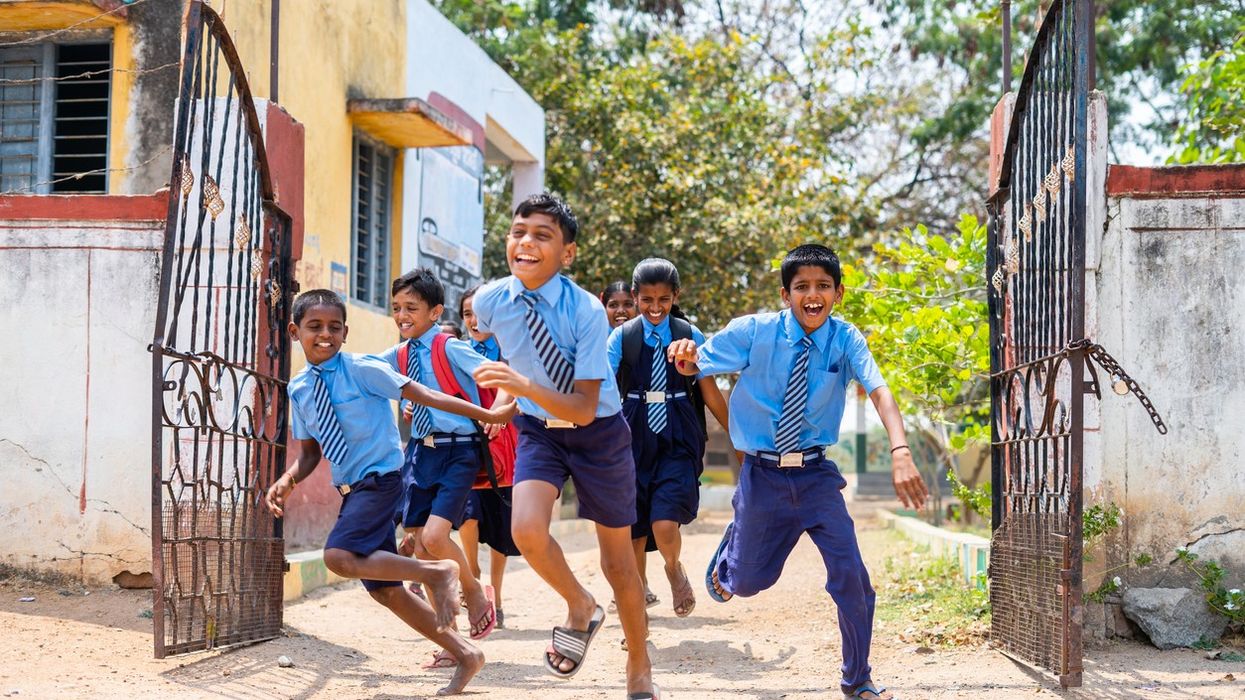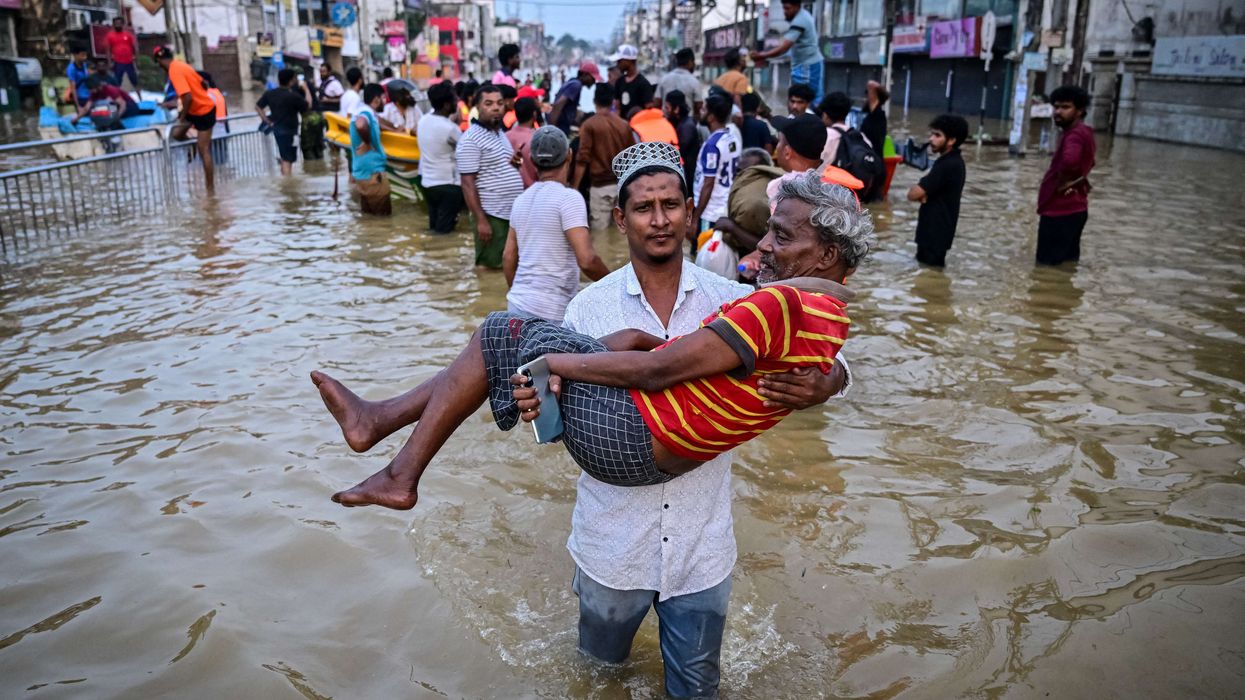Ajay Piramal, chairman of the Piramal Group and Pratham Education Foundation, on January 18 released the 17th Annual Status of Education Report (ASER) 2022 in New Delhi, India.
ASER is an annual survey which aims to give reliable estimates of children’s enrolment and basic learning levels for each district and state in India. It has been conducted every year since 2005 in all rural districts of the south Asian nation. It is the largest citizen-led survey in the country and the only annual source of information on children’s learning outcomes available in India today.
Piramal, who delivered the keynote address, said, “I congratulate Pratham on the release of ASER 2022. This is the largest citizen-led rural survey, delineating the status-quo of primary education in India.”
“Primary education is an important element to mould the children with right schooling and education in their formative years. The report unveils high enrolment of children in schools which is a good performance indicator for government programmes like Nipun Bharat Mission. Another positive is the increase in the number of girl child in schools. This indicates synergies and effectiveness of Government programs like Sukanya Samriddhi Yojana and Beti Bachao, Beti Padhao.
“Although there is good monitoring, feedback and capacity-building mechanism in place by the government, more effort needs to be put into enhancing foundational literacy to raise the overall standards of children’s education in the country.
He said the report gives a direction and sense that to better education standards, the eco-system involving the government, corporates, civil society, and NGOs need to work in tandem. Piramal also added that a concerted effort by all in the education space is required to push India’s economic and social development.
According to a press release from Pratham Education Foundation, ASER 2022 returned to the field nationwide after a gap of four years, reaching 616 rural districts.
This year’s data is expected to be particularly valuable as it comes after schools reopened after prolonged closures due to the Covid-19 pandemic.
As it has been in the past, the household survey recorded the schooling status of children in the age group 3-16 and assessed children aged 5-16 in basic reading and arithmetic.
Children’s English ability was also tested this year.
A national ASER survey has been done every year since 2005, except for 2015. The ‘basic’ ASER implemented in 2022 focuses on foundational skills of children in the elementary school-going age group and was done annually from 2005 to 2014 and then again in 2016 and 2018.
Because tools, sampling strategies, and survey methods are comparable over time, ASER 2022 data can be compared with previous years to provide trends over time.
Estimates of “learning loss” between 2018 and 2022 can provide important information to states and districts as they plan interventions for “learning recovery” and “catch up”.
Here are some key findings from ASER 2022 (Rural)
ASER 2022 reached 616 districts and 19,060 villages in rural India. A total of 374,544 households and 699,597
children in the age group 3 to 16 were surveyed.
Enrollment and attendance:
◼ Overall enrollment (age group 6-14): The enrollment rate for the 6 to 14 age group has been above 95 per cent for the past 15 years. Despite school closures during the pandemic, overall enrollment figures have increased from 97.2 per cent in 2018 to 98.4 per cent in 2022. The proportion of children in this age group who are not currently enrolled has dropped to 1.6 per cent.
◼ Government school enrollment: The period 2006 to 2014 saw a steady decrease in the proportion of children (age 6 to 14) enrolled in government school. In 2014, this figure stood at 64.9 per cent and did not change much over the following four years. However, the proportion of children (age 6 to 14) enrolled in government school increased sharply from 65.6 per cent in 2018 to 72.9 per cent in 2022. Increase in government school enrollment is visible in almost every state in the country.
◼ Proportion of girls who are not currently enrolled: In 2006, the All India figure for the percentage of girls age 11-14 who were out of school stood at 10.3 per cent, falling over the following decade to 4.1 per cent in 2018. This proportion has continued to drop. In 2022, the all-India figure for 11-14-year-old girls not enrolled in school stands at 2 per cent. This figure is around 4 per cent only in Uttar Pradesh and is lower in all other states.
◼ Enrollment in the pre-primary age group: Across rural India, the proportion of 3-year-olds enrolled in some form of early childhood education stands at 78.3% in 2022, an increase of 7.1 percentage points over 2018 levels. There is a substantial shift in enrollment patterns of young children in the age group 3-5 years who have moved into the ICDS (anganwadi) system from other forms of pre-school and school provision. In 2022, 66.8 per cent of three-year-olds were enrolled in Anganwadi Centres as compared to 57.1% in 2018. Among 4 year olds, Anganwadi enrollment has increased from 50.5% (2018) to 61.2% (2022).
Paid private tuition classes:
◼ Over the past decade, rural India has seen small, steady increases in the proportion of children in Std I-VIII taking paid private tuition classes. Between 2018 and 2022 this proportion increased further, among students in both government and private schools. Nationally, the proportion of children in Std I-VIII taking paid private tuition classes increased from 26.4 per cent in 2018 to 30.5 per cent in 2022. In state such as Uttar Pradesh, Bihar, and Jharkhand, the proportion of children taking paid private tuition increased by eight percentage points or more over 2018 levels.
Learning levels: Foundational skills in reading and arithmetic
Reading:
The ASER reading test assesses whether a child can read letters, words, a simple paragraph at Std I level of difficulty, or a “story” at Std II level of difficulty. The test is administered one on one to all children in the age group 5 to 16 in sampled households. Each child is marked at the highest level that she or he can reach comfortably.
Nationally, children’s basic reading ability has dropped to pre-2012 levels, reversing the slow improvement achieved in the intervening years. Drops are visible in both government and private schools in most states, and for both boys and girls.
Arithmetic:
The ASER arithmetic test assesses whether a child can recognise numbers from 1 to 9, recognise numbers from 11 to 99, do a 2-digit numerical subtraction problem with borrowing, or correctly solve a numerical division problem (3 digit by 1 digit). The tasks are administered one on one to all children in the age group 5 to 16 in sampled households. Each child is marked at the highest level that she or he can reach.
Nationally, children’s basic arithmetic levels have declined over 2018 levels for most grades. But the declines are less steep and the picture is more varied than in the case of basic reading.
Std III: The All India figure for children in Std III who are able to at least do subtraction dropped from 28.2 per cent in 2018 to 25.9 per cent in 2022. While Jammu and Kashmir, Uttar Pradesh, and Madhya Pradesh maintained or improved slightly over 2018 levels, steep drops of more than 10 percentage points are visible in Tamil Nadu (from 25.9 per cent in 2018 to 11.2 per cent in 2022), Mizoram (from 58.8 per cent to 42 per cent), and Haryana (from 53.9 per cent to 41.8 per cent).
English:
The ASER English test assesses children’s ability to read capital letters, small letters, simple 3-letter words, and short easy sentences in English. The test is administered one on one to all children in the age group 5 to 16 in sampled households. Each child is marked at the highest level that she or he can reach. Children who can read at word or sentence level are also assessed for comprehension of what they have read.
◼ ASER last assessed children’s English ability in 2016. Nationally, children’s ability to read simple English sentences has stayed more or less at the 2016 level for children in Std V (from 24.7per cent in 2016 to 24.5 per cent in 2022). Slight improvements are visible for children in Std VIII (from 45.3 per cent in 2016 to 46.7 per cent in 2022).
School observations:
As part of the ASER survey, one government school with primary sections is visited in each sampled village. Preference is given to a government upper primary school (Std I-VII/VIII) if one exists in the village. In 2022, ASER surveyors visited 17,002 government schools with primary sections. 9,577 were primary schools and 7,425 were upper primary schools.
◼ Small schools and multigrade classrooms: The proportion of government schools with less than 60 students enrolled has increased every year over the last decade. Nationally, this figure was 17.3 per cent in 2010, 24 per cent in 2014, 29.4 per cent in 2018, and stands at 29.9 per cent in 2022. The states with the highest proportion of small schools in 2022 include Himachal Pradesh (81.4 per cent) and Uttarakhand (74 per cent). However, some states show a decrease in the fraction of small schools, such as Uttar Pradesh (from 10.4 per cent in 2018 to 7.9 per cent in 2022) and Kerala (from 24.1 per cent in 2018 to 16.2 per cent in 2022).
School facilities:
◼ Nationally, small improvements are visible in all Right to Education-related indicators over 2018 levels. For example, the fraction of schools with usable girls’ toilets increased from 66.4 per cent in 2018 to 68.4 per cent in 2022. The proportion of schools with drinking water available increased from 74.8 per cent to 76 per cent, and the proportion of schools with books other than textbooks being used by students increased from 36.9 per cent to 44 per cent over the same period.
Other school indicators:
◼ Most children had received their textbooks for the current academic year. Textbooks had been distributed to all grades in 90.1 per cent of primary schools and in 84.4 per cent of upper primary schools.













